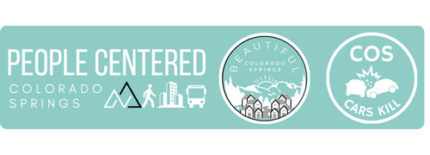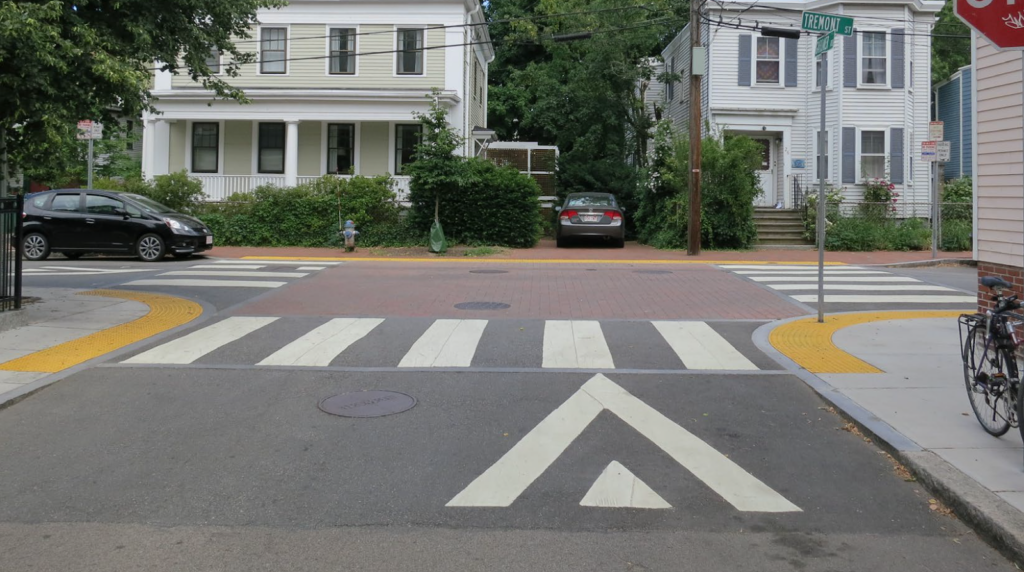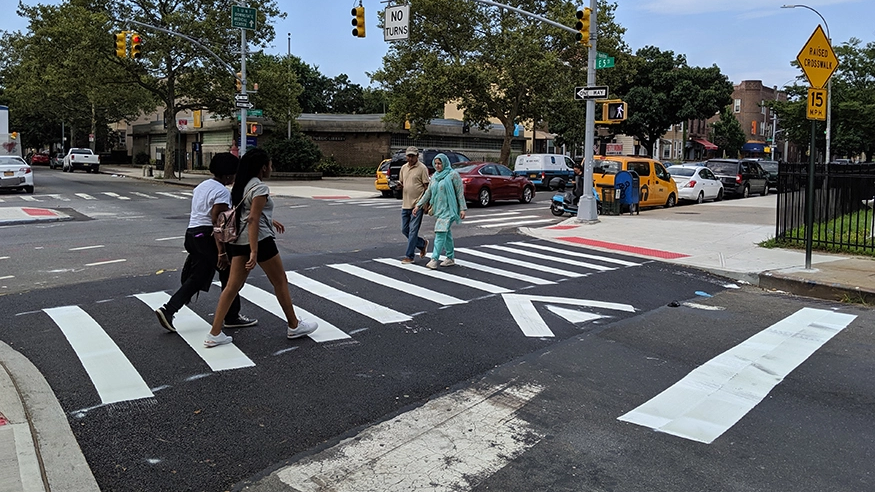Beautiful Colorado Springs is a project highlighting the beauty of Colorado Springs and the ways we can make it even better with people centered planning
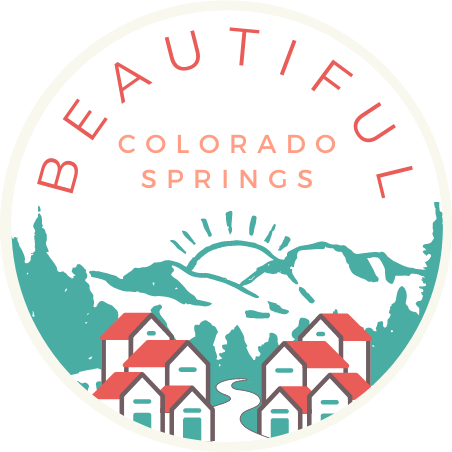
Beautiful Colorado Springs is here to celebrate the beauty that community, neighborhoods, places, and nature provide our great city.
We believe people centered planning, focused on:
walkability
public transportation
local business
gentle density
and diverse neighborhoods
are key to elevating our city to the next level
Residents haven’t always needed a car to get around Colorado Springs
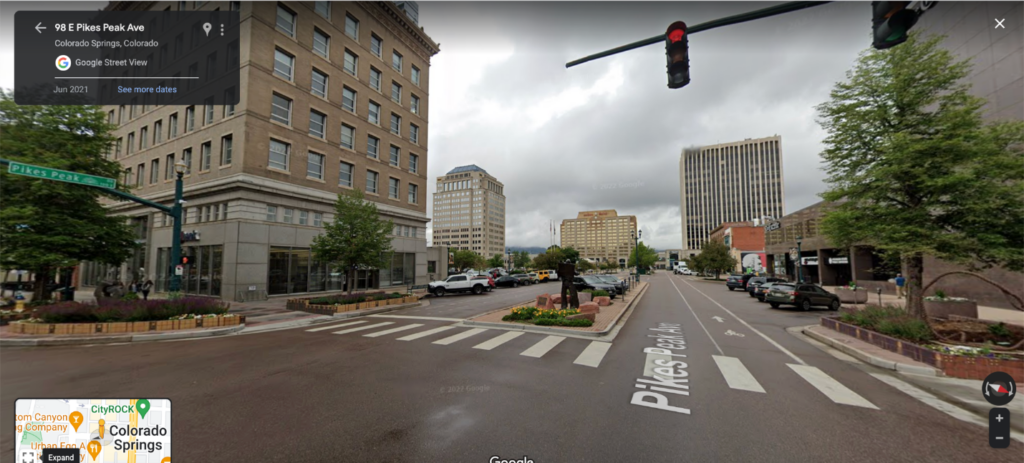

Colorado Springs was founded as a railroad town, prior to car centered planning of the post WWII era a car wasn’t needed to get around our city. Note the streetcar lines on Pike Peak Avenue, this was part of the streetcar network that ran throughout our much smaller city until the 1940s
Safe Streets and Roads for All Grant
In November of 2023 it was announced that The City of Colorado Springs has received a “Safe Streets and Roads for All” grant from the US Department of Transportation to fund a citywide traffic safety action plan to reduce roadway deaths and serious injuries.
The city’s grant of $280,000 is supplemented by a $70,000 city match
will fund the creation of a Colorado Springs Safety Action Plan
As part of this grant, the U.S. DOT requires grant recipients to use a safe systems approach when creating these action plans
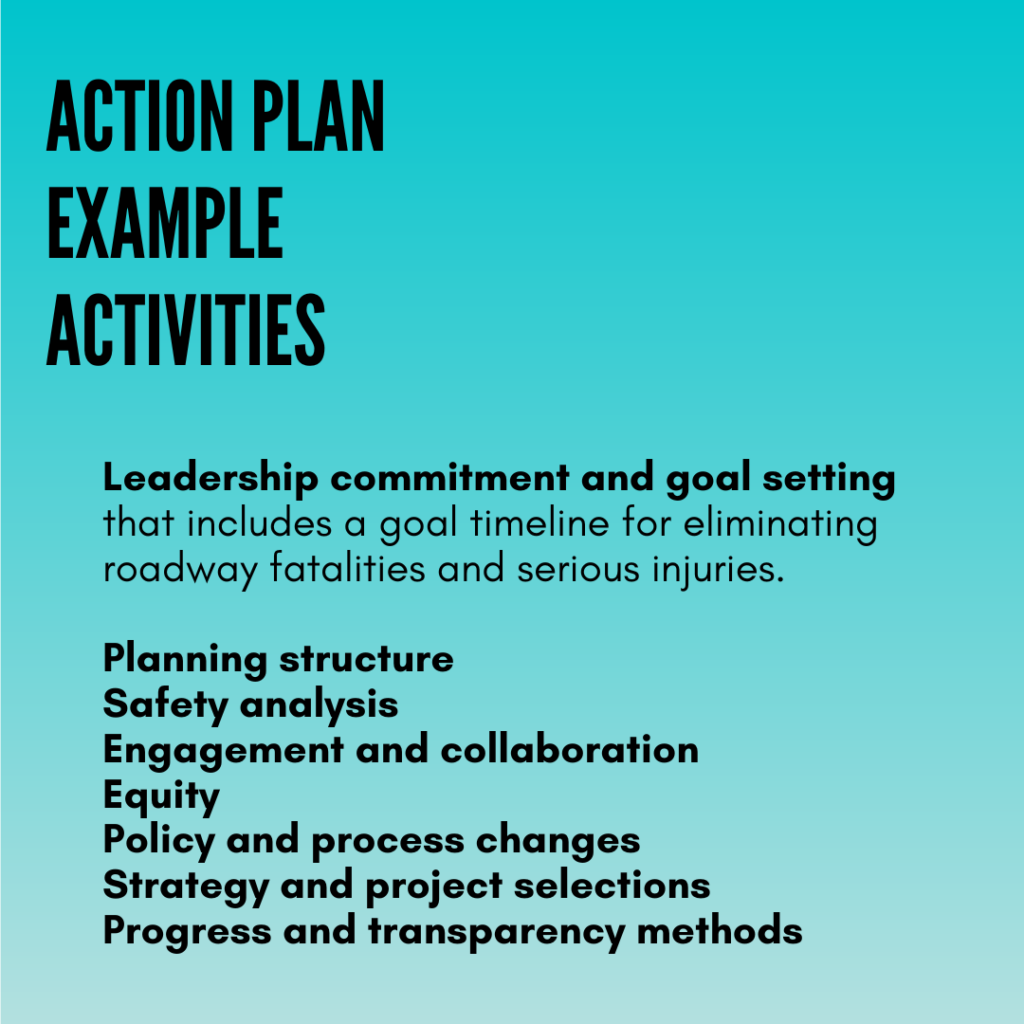
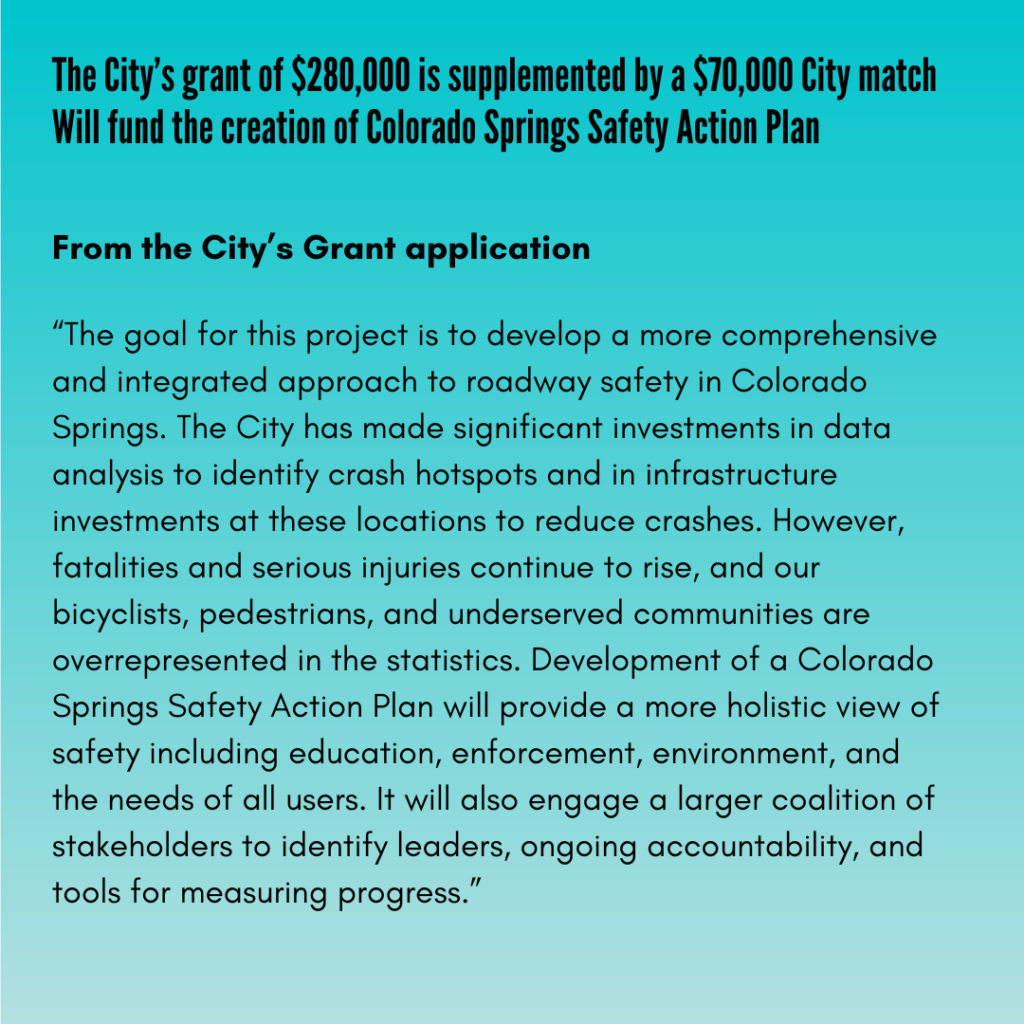
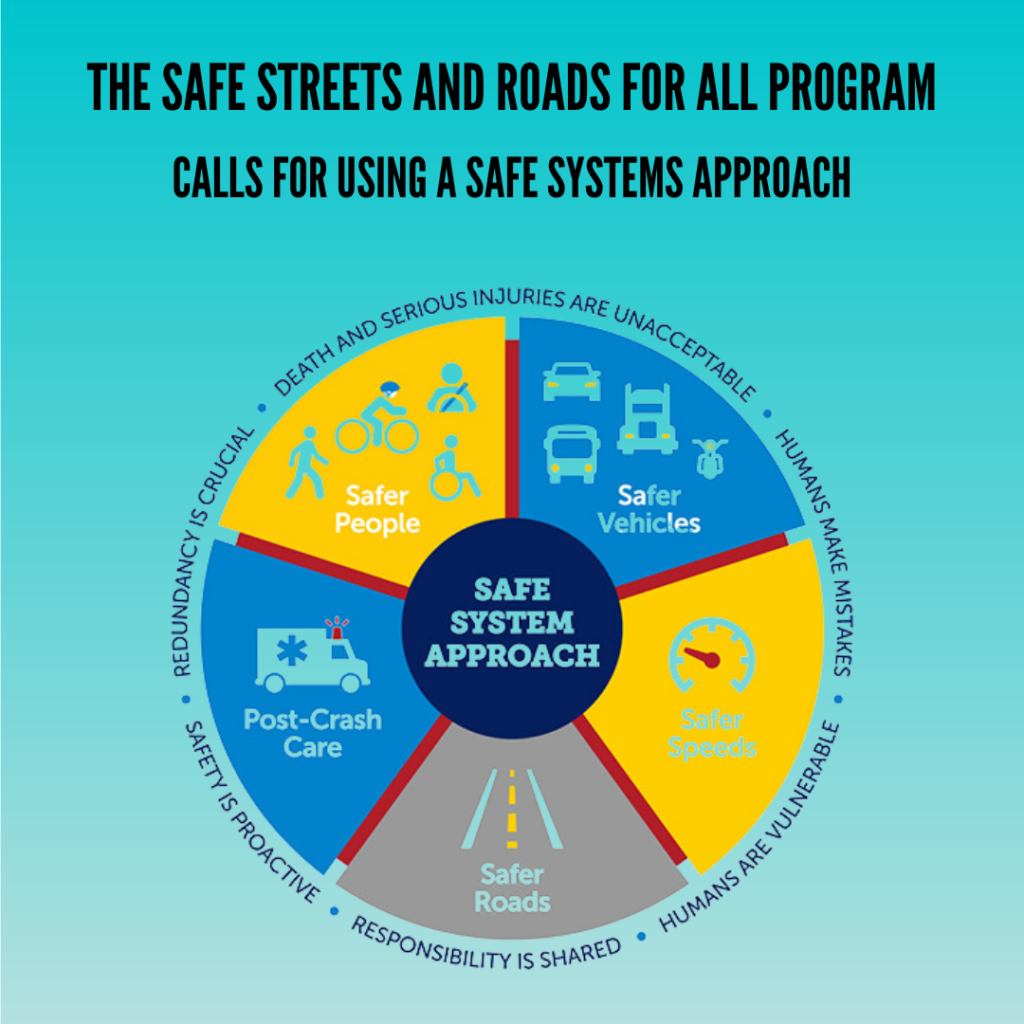
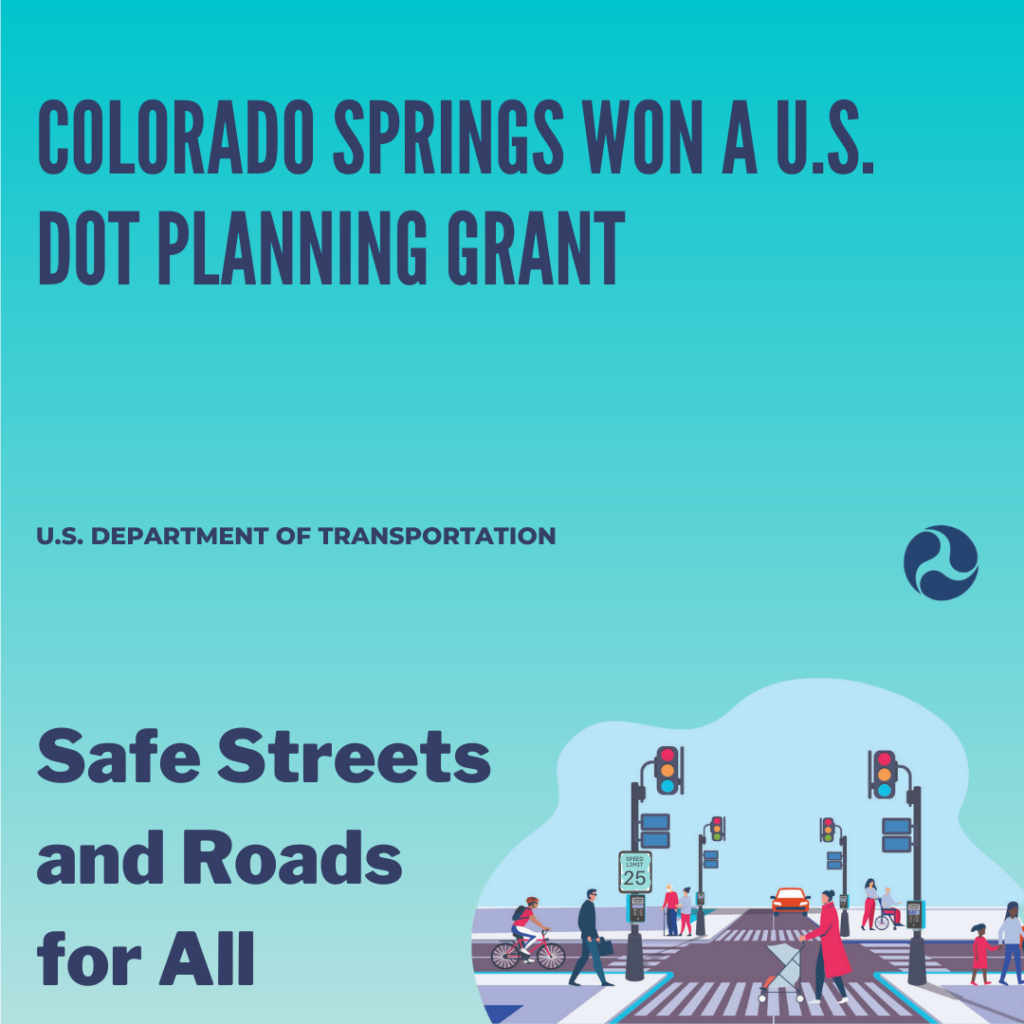
Speed Kills
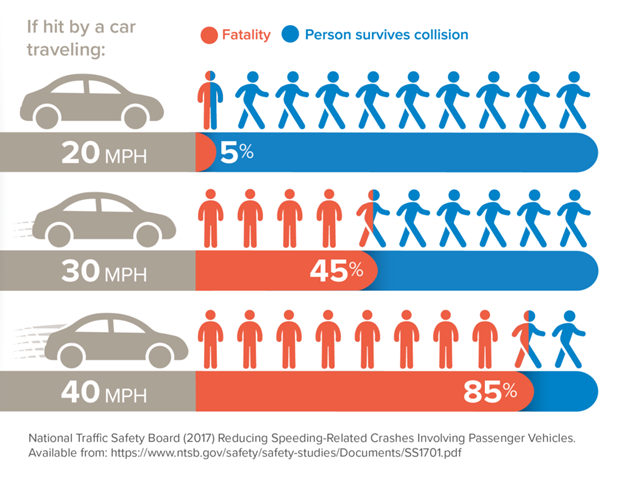
We know that people make mistakes, and we cannot prevent all crashes. Cars are large dangerous vehicles, when a mistake is made behind the wheel the consequences are often deadly. Because of this we need to deign streets so speeding the default
Dangerous by Design 2021 includes this frequently used graphic showing the impact of speed on survivability.
Resources:
https://visionzeronetwork.org/resources/safety-over-speed/
https://smartgrowthamerica.org/resources/dangerous-by-design-2022/
Car Centric Planning
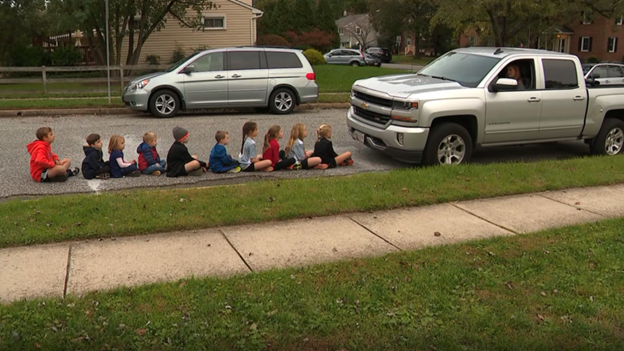
Car centered planning focuses on the safety of people in the vehicle, focusing on bigger and healthier cars,
To the detriment of people outside of the vehicle.
70 years of the status quo
Car centered planning has been the default for decades and the solution has been simple; If there’s a problem add a lane.
Governments decide the speed/build through algorithms and outdated standards
Projections assume more cars
Speed limits are based on the speed of the fastest 85% of people on the street
Corners are built according to outdated guidelines
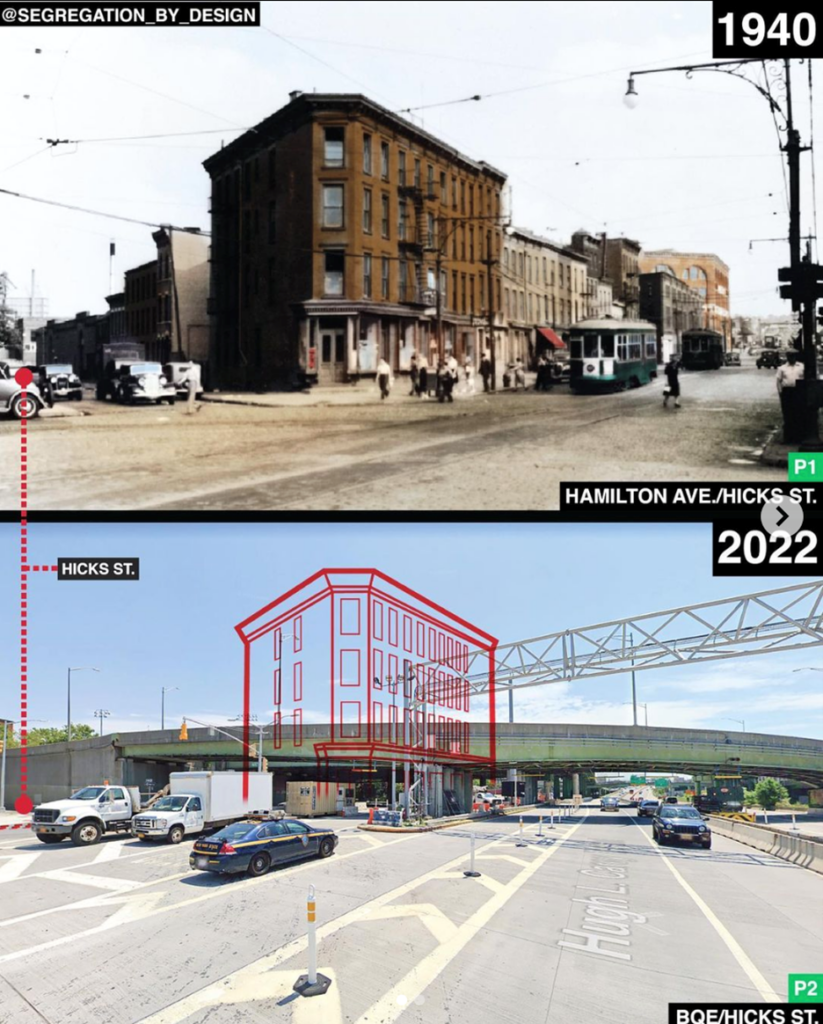
What Does this Mean in Colorado Springs?
IN 2022:
52 people were killed in crashes in Colorado Springs*
79 people were killed in El Paso County*
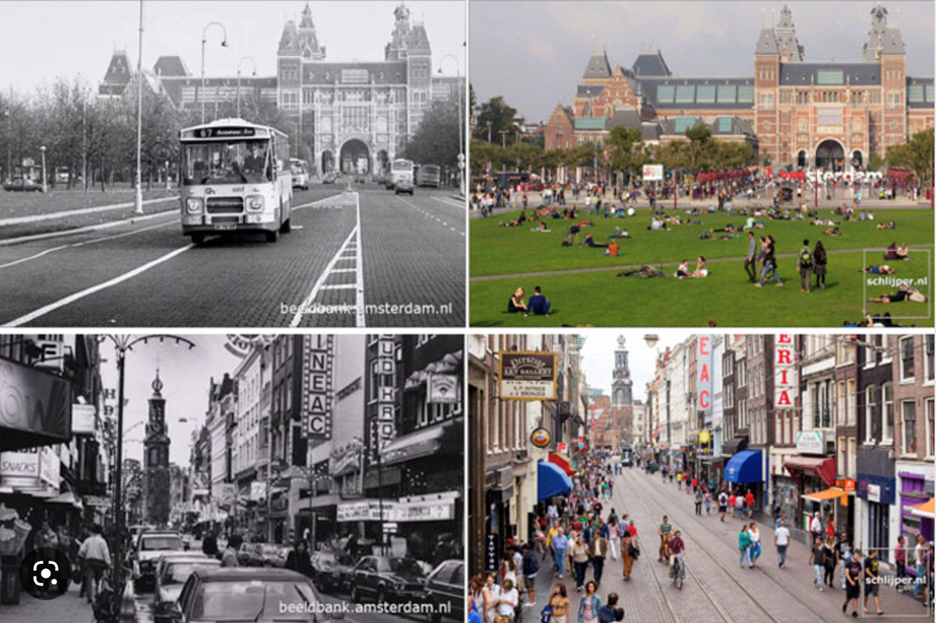
Even the pinnacle of pedestrian and bicycling infrastructure like Amsterdam wasn’t always this way. In the 70s Amsterdam was a car centric place like most cities in the U.S.
Change takes time, In 2019, the Netherlands had 3.8 traffic fatalities per 100,000. A 48% decline from 2000
In 2020 we had 10.8 traffic fatalities per 100,000 in Colorado
It took a concerted effort to make this shift in in the Netherlands in the form of a movement called “Stop the Kindermord”
more info on this shift from 99% Invisible
*Note statistics vary for 2022, with as many as 56 fatalities in Colorado Springs and 83 fatalities for El Paso County on a previous iteration of the CDOT website.
we need to center people
People centered planning puts people first
The streets have to actively prioritize people not just alongside cars but people with their own forms of movement. Residents need to have the freedom to choose how they get around; Walking, biking, rolling, riding, driving or horseback riding.
People centered places are resilient
Reliable, safe, with frequent public transport, and modern street design make people centered places nimble and responsive to the needs of citizens.
People centered places have nearby amenities
Land use and transportation networks go hand in hand. places with schools, employers, and retail businesses close to or within neighborhoods reduce the need to drive and allow for more interaction with the community.
Road Design Matters
We need to build our roads to feel comfortable at the speed we want people to drive, not continue to set speed limits to the speed people feel comfortable driving on our over built roads
If you need a sign, it’s a bad design.
Per the National Association of City Transportation Officials (NACTO), “Narrower streets help promote slower driving speeds, which, in turn, reduce the severity of crashes. Narrower streets have other benefits as well, including reduced crossing distances, shorter signal cycles, less stormwater, and less construction material to build.”
It can be tempting to blame drivers for driving poorly.
However a lot of our problems come down to what the designs of our streets imply to drivers.
If you’re relying on signs to tell drivers how to drive on the road, it implies the road is designed incorrectly. Because the drivers can’t tell how to drive safely based on the design of the road.
For example, when roads are wide, fast, and straight they tell the driver to speed. The road tells drivers they are driving through a neighborhood to get to their destination, not visiting a neighborhood that people come to visit. A speed limit sign won’t change that.
Alternatively, a street with narrower lanes and increased visual cues, trees closer to the road, crosswalks, pedestrian islands, tell drivers and other users to pay attention to the road.
This is a neighborhood where people gather. There are other people and objects here to avoid. These stronger indicators provide drivers with information that encourages them to pay attention to their environment and lowers the risk they’ll hit other vehicles, pedestrians, or bikers.
In urban settings, lane width should be 10 feet for regular automobile traffic and 11 feet for larger automobiles, such as buses and trucks.
Learn more from Strong Towns and NACTO
Greater Investment in Transit
Public transportation is about 10x safer than using a car.
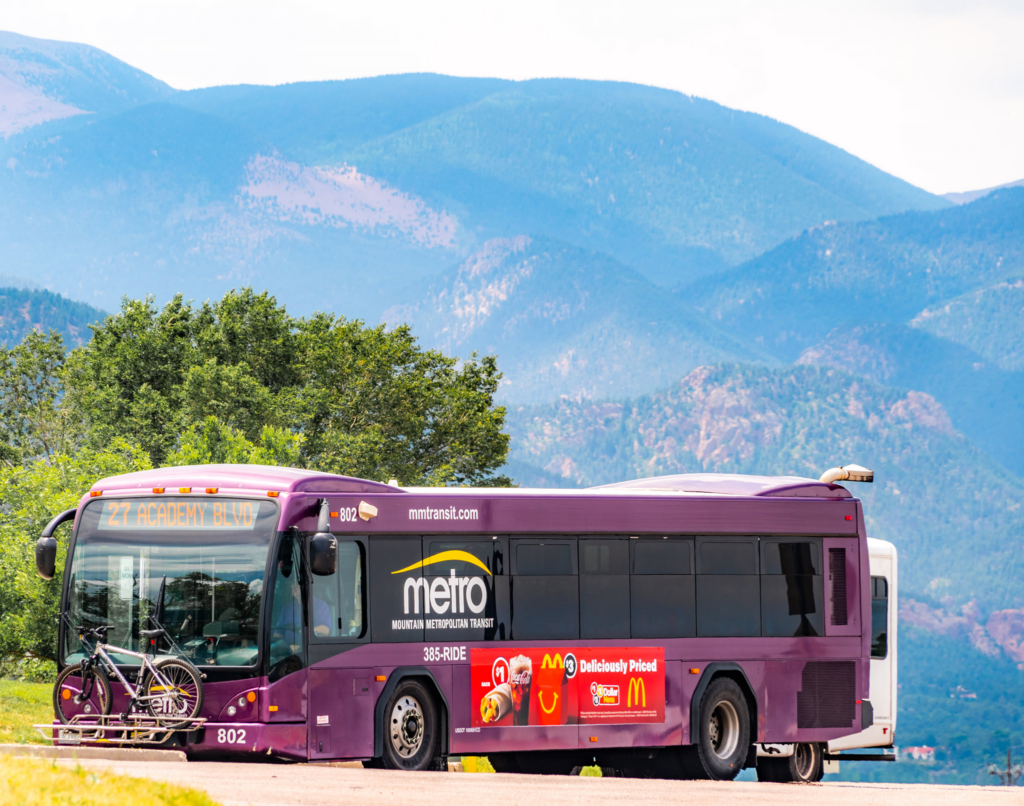
“Public transportation passengers have less than 1/10th per-mile crash rates compared to travelers in privately owned automobiles, and transit-oriented communities have less than a fifth of the total (pedestrian, cyclist, automobile, and transit passenger) per capita fatality rates compared to automobile-dependent communities.”
Learn more from APTA
Colorado Springs is an automobile-dependent community with a transit score of 19/100, which means Colorado Springs falls under the designation of minimal transit. But there is a demand for transit in our area. Zero Fare for Better Air brought record-breaking boardings on Mountain Metropolitan Transit in Colorado Springs this summer. There were 366,922 boardings in August 2023, beating a record-breaking July 2023.
How can we improve?
By making transit frequent, safe, and reliable. Transit needs to be: Convenient and easily walkable, well lit, clean, protected with covered bus stops, and arrive frequently and reliably. This means expanded routes and fifteen minute frequencies.
Learn more from GovTech
Everyone is a pedestrian at some point in their trip
Crosswalks
Crosswalks in Colorado Springs are narrow and difficult for drivers to see. Crosswalks should be painted so that the paint is wider than the cut-through area (info from NACTO). This change would make crosswalks more visible to vehicles. Pedestrians also benefit from shorter distances between crosswalks, especially near bus stops, to ensure pedestrians have safe crossings and efficient routes through the city. Spending a little more on paint so that crosswalks have larger painted areas than cut-through areas would greatly increase pedestrian safety at a relatively low cost.
Palmer Park Blvd & San Miguel
See the anemic crosswalk paint after road repairs and new paint was applied (Picture taken on November 19, 2023) reducing the visibility of the crosswalk for vehicles
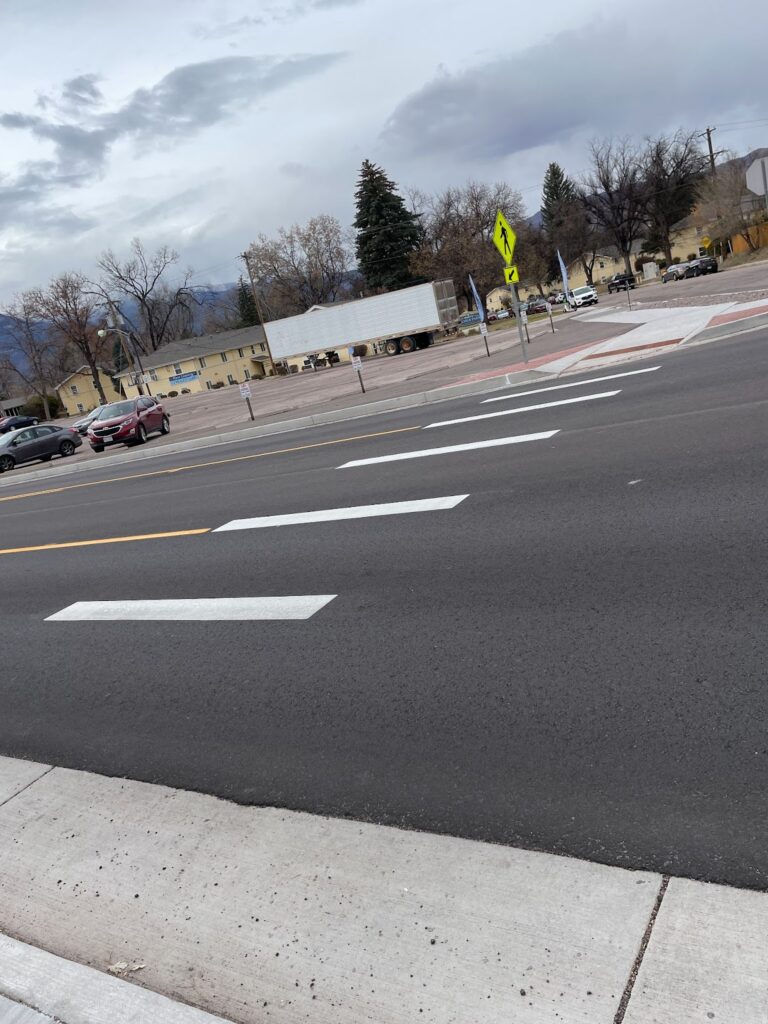
Wasatch and Uintah looking west
The two older crosswalks below are striped differently at the intersection (Picture taken on November 19, 2023).
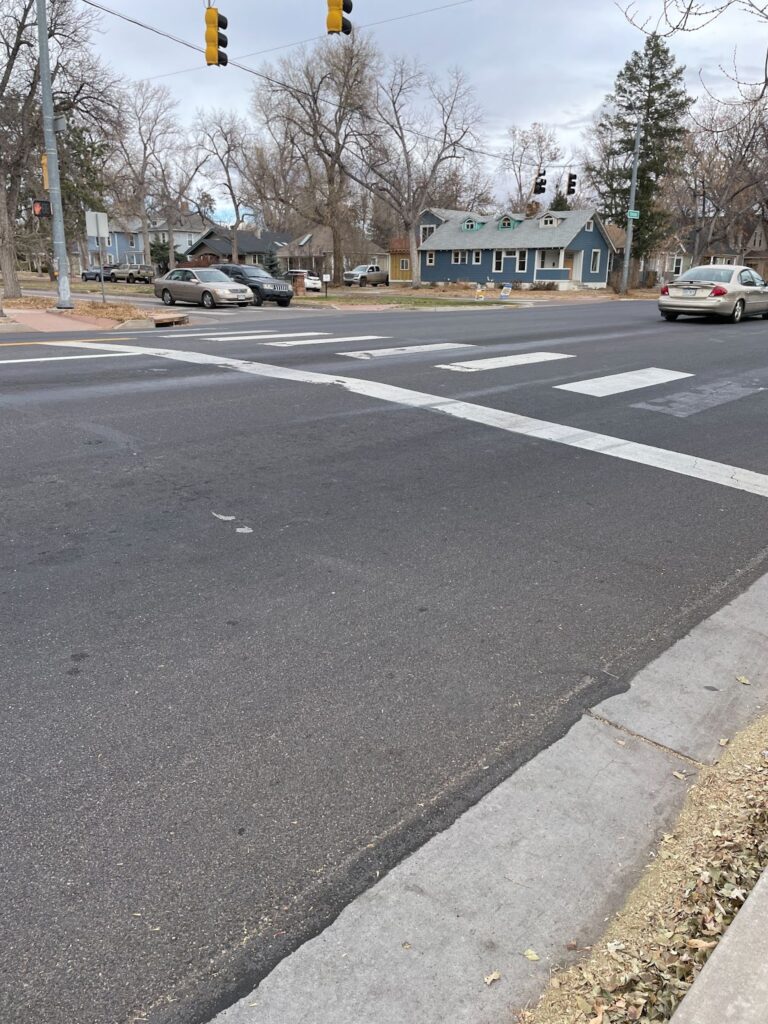
Wasatch and Uintah looking east
Even with slightly thicker paint, the cut-through areas are bigger than the painted areas, reducing vehicle visibility of the crosswalks.
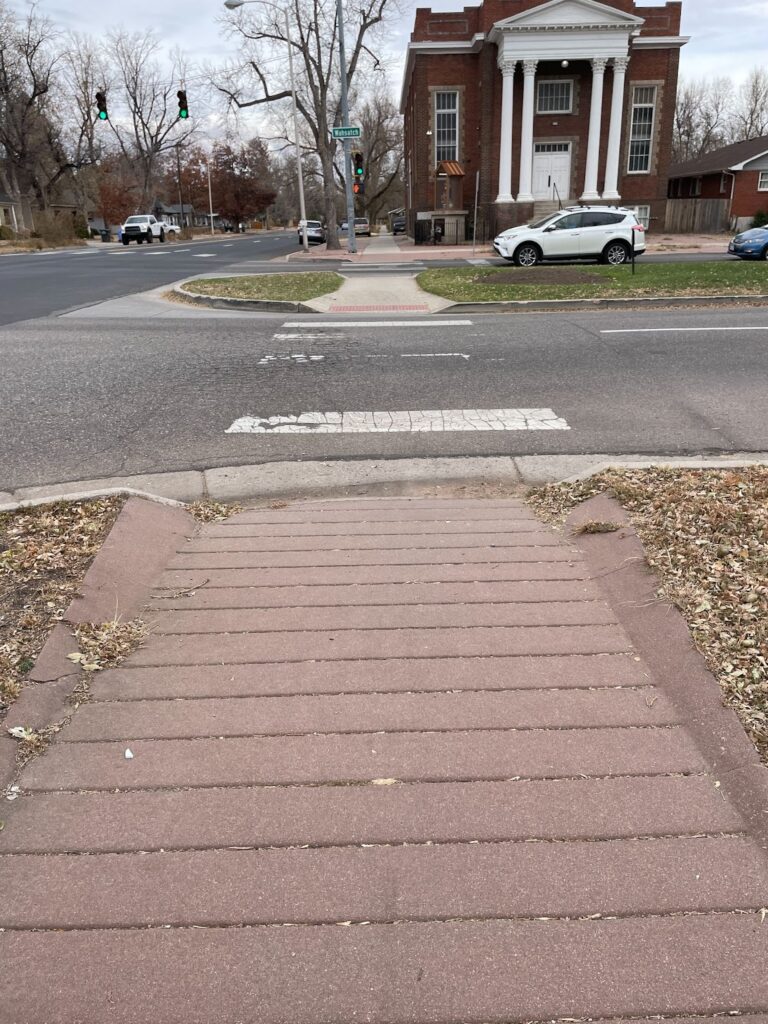
Raised Crosswalks
If we want to further upgrade a crosswalk a raised adds a physical barrier that slows cars and lets drivers know that they have physically entered a pedestrian area. Additionally it can reduce the need to repour curbs as the height remains constant.
